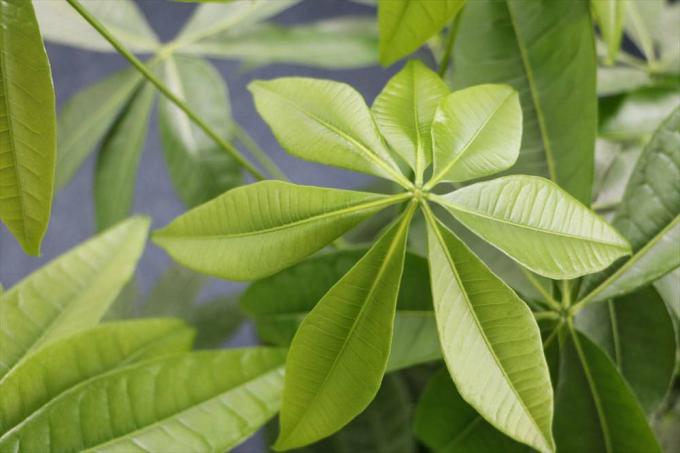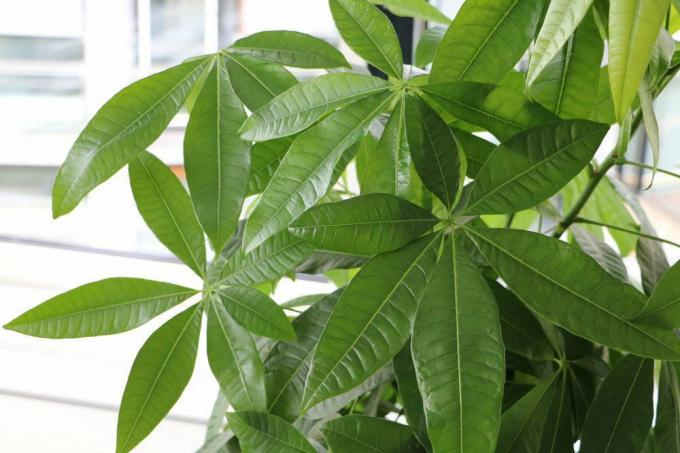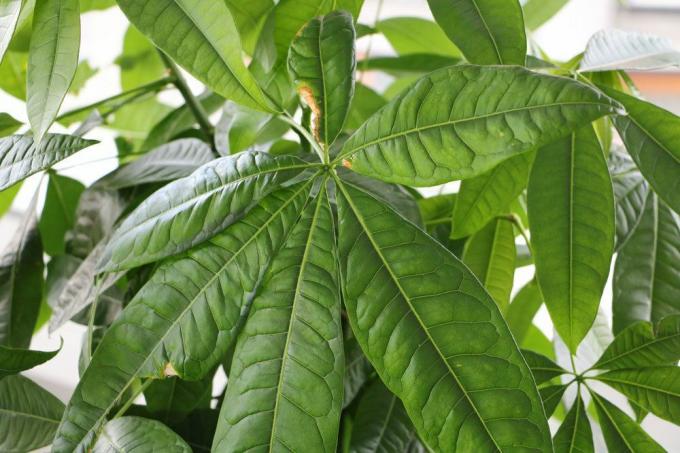
table of contents
- Toxicity
- For children
- For cats
- For pets
- edibility
The lucky chestnut is one of the non-toxic plants and can be safely placed in a household with pets. Pachira aquatica is native to South America, but is now popular in Germany as an ornamental plant. the Lucky Chestnut is mostly sold as a potted plant, and the trunks are often braided. This method represents a danger for the plant itself, because damage to the trunk can lead to infestation with pests and thus to the death of the plant.
Toxicity
For children
Pachira aquatica in the household with children
Care should be taken with young children if a lucky chestnut (often Pachira glabra) is one of the ornamental plants. The foliage and the fruits are not poisonous, but the trunk contains a sap that may cause symptoms of poisoning. However, the danger only exists in small children and only if the juice of several plant stems is consumed. The likelihood of poisoning is therefore low, but for safety reasons the plant should still be kept out of the reach of children.

For cats
The lucky chestnut is not poisonous for cats
Cats and other pets are often very interested in houseplants. To avoid the risk of poisoning, only non-toxic plants should be placed near animals. Pachira aquatica is one of the non-toxic plants for animals, even if cats gnaw on the leaves there is no danger. The other way around, however, the beloved house tigers pose a threat to the trunk of the plant. Due to the thin bark, this is relentlessly exposed to the cat's claws. If the house tiger scratches the trunk and scars appear, the plant is exposed to the risk of pest infestation. It often only takes a few weeks for the first symptoms to appear.
Note: Too frequent watering also damages the plant, the rot pattern initially resembles that of a pest infestation.
For pets
Toxicity of lucky chestnuts to other pets
dogs
It is the same with dogs as it is with cats, the plant cannot harm their health. Even if a dog plays with the trunk of a pachira and swallows some of the sap, there are no significant symptoms of poisoning to be feared.
Rabbits
However, the plant should be kept out of the reach of rabbits. Despite their edibility, they are not suitable as a vegetable for herbivores. The branches should also not be given to the animals as a nibble, as the sap contained in them can lead to thin-flowing excrement. However, fear of poisoning is not necessary if the animal is consuming parts of the plant. It is more dangerous for the plant, which can suffer permanent damage from the sharp rabbit teeth.

Birds
The lucky chestnut is not poisonous for birds, as well as the beloved budgie, even if the birdie pecks at the plant, there is no danger to be feared.
The toxicity of the lucky chestnut at a glance:
- no danger to cats
- no danger to rodents, dogs and birds
- no danger to adult people
- low risk for young children
- The leaves and fruits of the plant are edible
- Toxicity only in the sap of the trunk for children
- Poison database contains no entries for Pachira aquatica
Attention: It should be noted that the use of fertilizers can pose a risk to pets and children. It is therefore advisable to use harmless fertilizers within the reach of other animal residents and children.

edibility
Edible parts of lucky chestnuts
Most people keep the houseplant because of its year-round, green appearance and symbolism. Lucky chestnuts are considered lucky charms in large parts of Germany and are very popular as gifts. However, what very few plant lovers know is that many parts of the plant are even edible. For example the young leaves, which can be cooked and used as vegetables or as a crunchy addition to salads. But the seeds of the lucky chestnut can also be roasted. The taste is reminiscent of a peanut. Fortunately chestnuts native to this region usually do not develop seeds. The reason for this is the cramped breeding place in pots and the wrong weather conditions.
In South America, the fruits of Pachira aquatica are even used as a substitute for cocoa beans. The drink made from the ground powder has a nutty taste of its own and is usually made with water or milk.
What to do when consuming the lucky chestnut?
If pets have eaten parts of the plant, there are no sequelae to fear. In the poison databases, the plant is not listed as poisonous and therefore there is no danger. Only the organism of a small child is not yet able to process the plant sap. There is no threat when consuming smaller amounts of the juice contained in the stem. However, if a child has consumed the juice of several plant stems, the poison control center should be asked for advice. As a rule, there are no fatal threats, but there is a risk of effects on the gastrointestinal tract.



